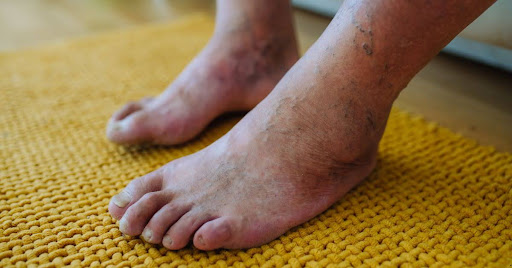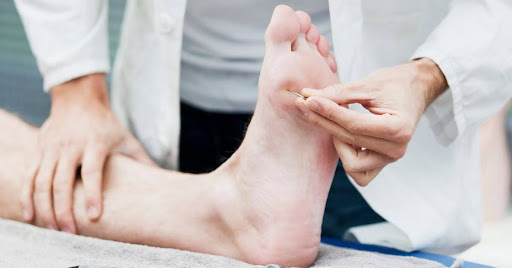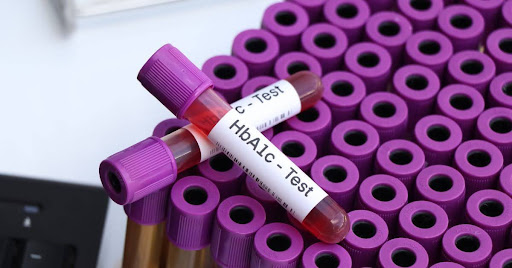Signs and Symptoms of Foot Ulcers in Diabetes
3 min read
By DocGenie , Published on - 03 January 2025Foot ulcers are one of the most common and serious complications of diabetes. These open sores or wounds, typically located on the bottom of the foot, can lead to infections and even amputation if not treated promptly. Recognizing the early signs and symptoms of diabetic foot ulcers can help patients seek medical care before complications arise.
In this article, we’ll cover what foot ulcers are, how to identify early-stage ulcers, and why diabetic patients need regular foot check-ups.

What is a Diabetic Foot Ulcer?
A diabetic foot ulcer is an open wound or sore that occurs in individuals with diabetes, usually on the bottom of the feet or toes. Poor blood circulation and nerve damage (neuropathy) in diabetic patients increase the risk of ulcers forming and healing slowly.
Why Are Diabetics Prone to Foot Ulcers?
- Peripheral neuropathy reduces pain sensation, allowing injuries to go unnoticed.
- Poor circulation slows healing and increases infection risk.
- Immune system impairment in diabetics weakens the body’s defense against bacteria.
What Are the Early Signs of a Diabetic Foot Ulcer?
 Catching a diabetic foot ulcer early can make a huge difference in recovery outcomes. Here’s what to look out for:
Catching a diabetic foot ulcer early can make a huge difference in recovery outcomes. Here’s what to look out for:Early Symptoms:
- Redness or irritation on the foot
- Unusual warmth in a localized area
- Swelling around the affected zone
- A small blister, cut, or abrasion that doesn’t heal
- Drainage or pus in socks or footwear
- Skin discoloration (dark patches)
- A foul odor even with regular hygiene
How Do Diabetic Foot Ulcers Progress in Stages?
 Foot ulcers develop in stages—from mild skin irritation to deep infections that may involve muscles, tendons, and bones.
Foot ulcers develop in stages—from mild skin irritation to deep infections that may involve muscles, tendons, and bones.Diabetic Foot Ulcer Stages:
- Stage 0: Skin is intact but at high risk (e.g., calluses or deformities)
- Stage 1: Superficial ulcer with no infection
- Stage 2: Deeper wound reaching muscles or tendons
- Stage 3: Ulcer reaches bone or joints (osteomyelitis may occur)
- Stage 4: Localized gangrene on toes or forefoot
- Stage 5: Extensive gangrene involving the whole foot
Important: The earlier a foot ulcer is detected, the more likely it is to heal without surgery or amputation.
What Are the Common Signs and Symptoms of Diabetic Foot Ulcers?
In addition to visual and sensory changes, here are warning signs of infection or complications that require immediate medical attention.
Advanced Symptoms to Watch For:
- Persistent foot pain despite numbness
- Increased pus or discharge
- Fever, chills, or fatigue (indicating infection)
- Deep cracking in the skin or open sores
- Loss of sensation in the affected area
- Black tissue or skin necrosis (gangrene)
What Should You Do If You Notice a Foot Ulcer?
Acting quickly is vital. Here's what you should do if you spot a possible ulcer:
Steps to Take:
- Do not attempt home remedies or apply ointments without medical advice.
- Clean the area gently and keep it dry.
- Avoid walking barefoot or putting pressure on the ulcer.
- Visit a diabetologist or podiatrist for professional evaluation.
Treatment may involve debridement (removal of dead tissue), antibiotics, offloading with special footwear, and wound dressings. In severe cases, hospitalization or surgery may be required.
How to Prevent Diabetic Foot Ulcers?
Regular foot care and tight blood sugar control are the most effective ways to avoid foot ulcers.Preventive Measures:
- Inspect your feet daily for cuts, blisters, or color changes
- Keep feet clean and moisturized (avoid between toes)
- Trim toenails carefully
- Wear well-fitted, cushioned shoes
- Avoid walking barefoot
- Manage blood sugar, blood pressure, and cholesterol levels
- Schedule annual foot exams with your healthcare provider



